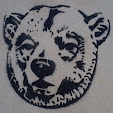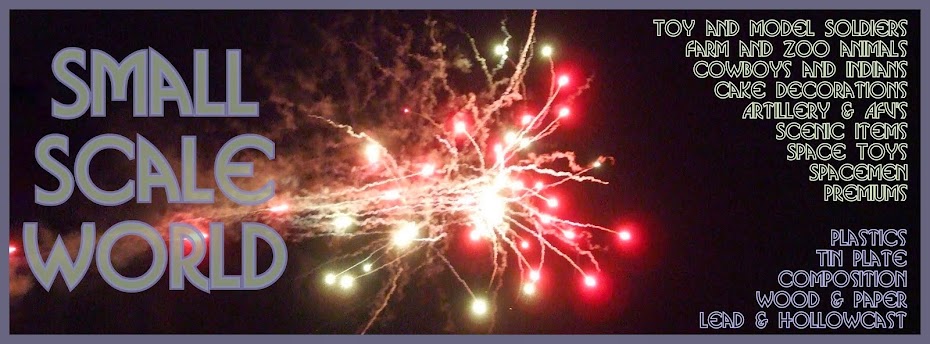This is a collage of copyright free images (which doesn't mean you can use them 'as is' - the manipulated collage-image is (C) this blog) taken from a pre-war book issued by the Hungarian equivalent of the V&A or British Museum, and shows some of the items in their collection and archives.
It's hard to tell what size they are, I suspect about 50/60mm, and I'm not 100% sure if they are hand carved from wood, slate-cast 'traditional' lead flats, or zink-lead spelter castings? I suspect normal lead castings from slate moulds, but they seem to have a decorative purpose, rather than for use as toy soldiers so they may be spelter, and the detailing on the cavalryman's casting could be hinting at sand-casting. Meaning that they could be sand-cast, lead-based spelter from carved-wood pattern blocks? They're all in the tag list anyway!
The lady looks to be a little more fully-round, so a semi-flat (or demi-rond?), possibly with a flat back (I think they may all have blank rear faces), the other two are wood-cut patterns to work from. Uniforms of the three cavalrymen point to the 19th century.
Can anybody add anything else?
About Me

- Hugh Walter
- No Fixed Abode, Home Counties, United Kingdom
- I’m a 60-year-old Aspergic gardening CAD-Monkey. Sardonic, cynical and with the political leanings of a social reformer, I’m also a toy and model figure collector, particularly interested in the history of plastics and plastic toys. Other interests are history, current affairs, modern art, and architecture, gardening and natural history. I love plain chocolate, fireworks and trees, but I don’t hug them, I do hug kittens. I hate ignorance, when it can be avoided, so I hate the 'educational' establishment and pity the millions they’ve failed with teaching-to-test and rote 'learning' and I hate the short-sighted stupidity of the entire ruling/industrial elite, with their planet destroying fascism and added “buy-one-get-one-free”. Likewise, I also have no time for fools and little time for the false crap we're all supposed to pretend we haven't noticed, or the games we're supposed to play. I will 'bite the hand that feeds', to remind it why it feeds.
Sunday, February 22, 2015
H is for Hungary
Labels:
1:Unknown,
Cavalry,
Designs,
Ethnic Dress,
Flats,
H,
Make; Hungary,
Metal - Lead,
Metal - Spelter,
Napoleonic,
Prints,
Wood
Subscribe to:
Post Comments (Atom)



No comments:
Post a Comment